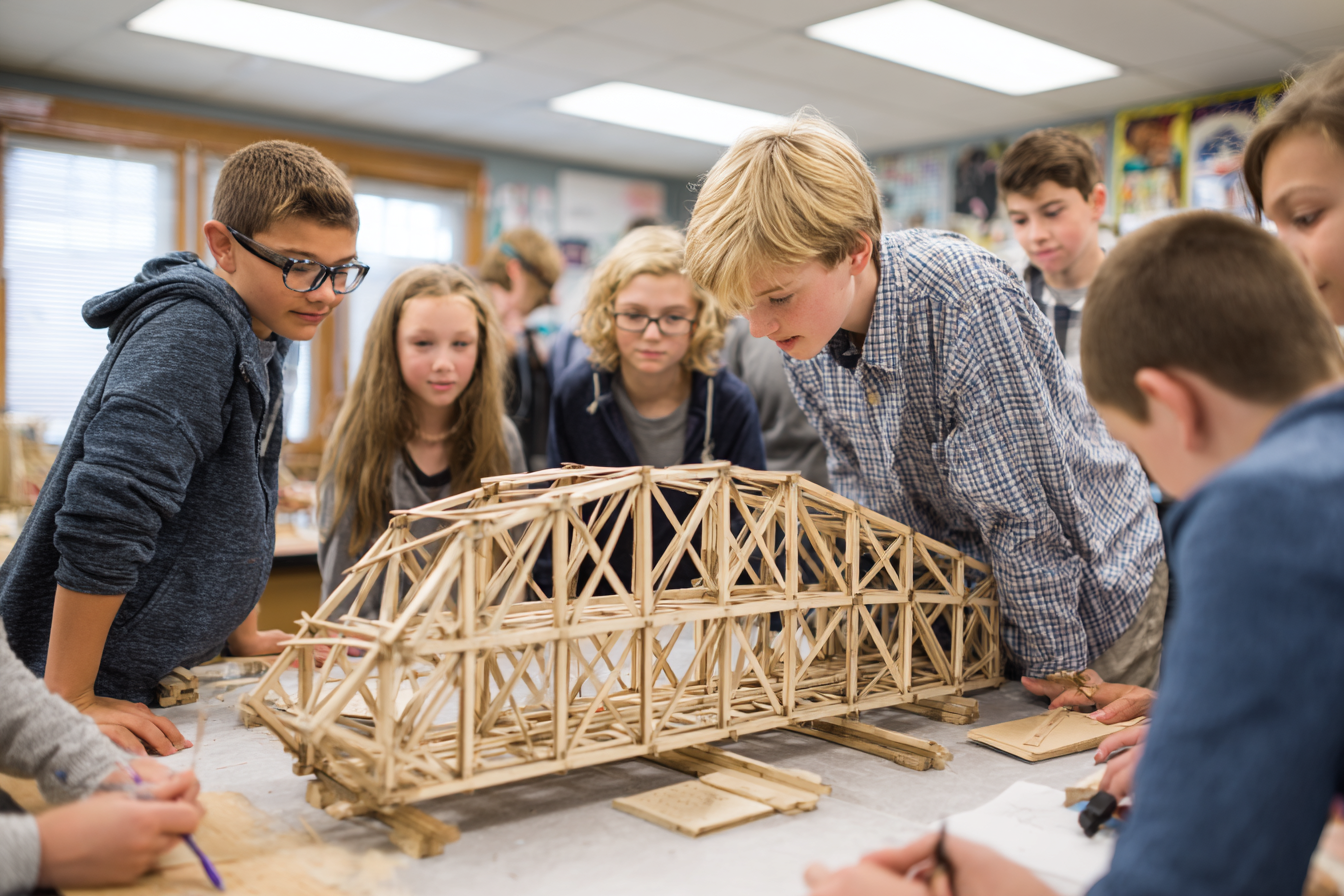Lesson Plan (Grades 6–8): Bridge the Gap – DIY Truss Structures
Grades 6-8 STEM project: design, build & test Pratt vs Warren balsa truss bridges to learn forces, data analysis & real-world engineering.

Lesson Title: Bridge the Gap – DIY Truss Structures
Grade Level: Grades 6–8
Subject Area: Engineering Design / Physics (Forces & Mechanics) / Material Science
Overview: Bridges are marvels of engineering that connect communities and facilitate commerce. In this engaging, multi-session STEM lesson, students step into the role of structural engineers as they design, construct, and test miniature truss bridges using balsa wood, string, and 3D-printed connector joints. Working in teams, learners will compare two classic truss patterns—Pratt and Warren—by building each design to span a fixed distance. They then apply incremental loads, measure midspan deflection, and collect force-vs.-deflection data to determine which truss provides greater stiffness and load capacity. Throughout the project, students explore core concepts in mechanics (tension and compression), material properties, data analysis, and the iterative nature of engineering design. Teachers will find detailed guidance on objectives, materials, step-by-step procedures, differentiation strategies, assessments, and extensions that connect classroom learning to real-world bridge construction and infrastructure challenges.
Objectives and Standards
Learning Objectives
- Truss Mechanics: Identify how members in Pratt and Warren trusses carry tension or compression, and explain how the overall geometry distributes loads.
- Engineering Process: Follow the engineering design cycle—define problem, brainstorm, plan, build, test, analyze, and improve—to create functioning scale-model bridges.
- Construction Skills: Measure, cut, and assemble balsa wood members with 3D-printed joints, ensuring accurate dimensions and snug, square connections.
- Data Collection & Analysis: Perform systematic load tests, record deflection data with precision, calculate stiffness values (force/deflection), and graph load-deflection curves.
- Comparative Evaluation: Analyze and compare the performance of Pratt versus Warren trusses in terms of stiffness, maximum load capacity, and material efficiency.
- Real-World Connections: Relate small-scale findings to full-size bridge engineering considerations, such as safety factors, material selection, and structural resilience.
Standards Alignment
- Next Generation Science Standards (NGSS)
- MS-ETS1-1: Define criteria and constraints for solving a structural design problem (bridge to support a load over a span).
- MS-PS2-1: Analyze data to support the claim that gravity influences the motion and deformation of structures under load.
- Common Core State Standards – Mathematics
- 6.SP.B.5: Summarize numerical data sets (load and deflection measurements) in relation to their context.
- 7.RP.A.2: Recognize and represent proportional relationships (deflection per unit load) and use them to solve real-world problems.
- NGSS Crosscutting Concepts
- Structure and Function: Understanding how the arrangement of truss members affects load distribution.
- Stability and Change: Investigating how incremental loading changes bridge deformation and performance over time.
